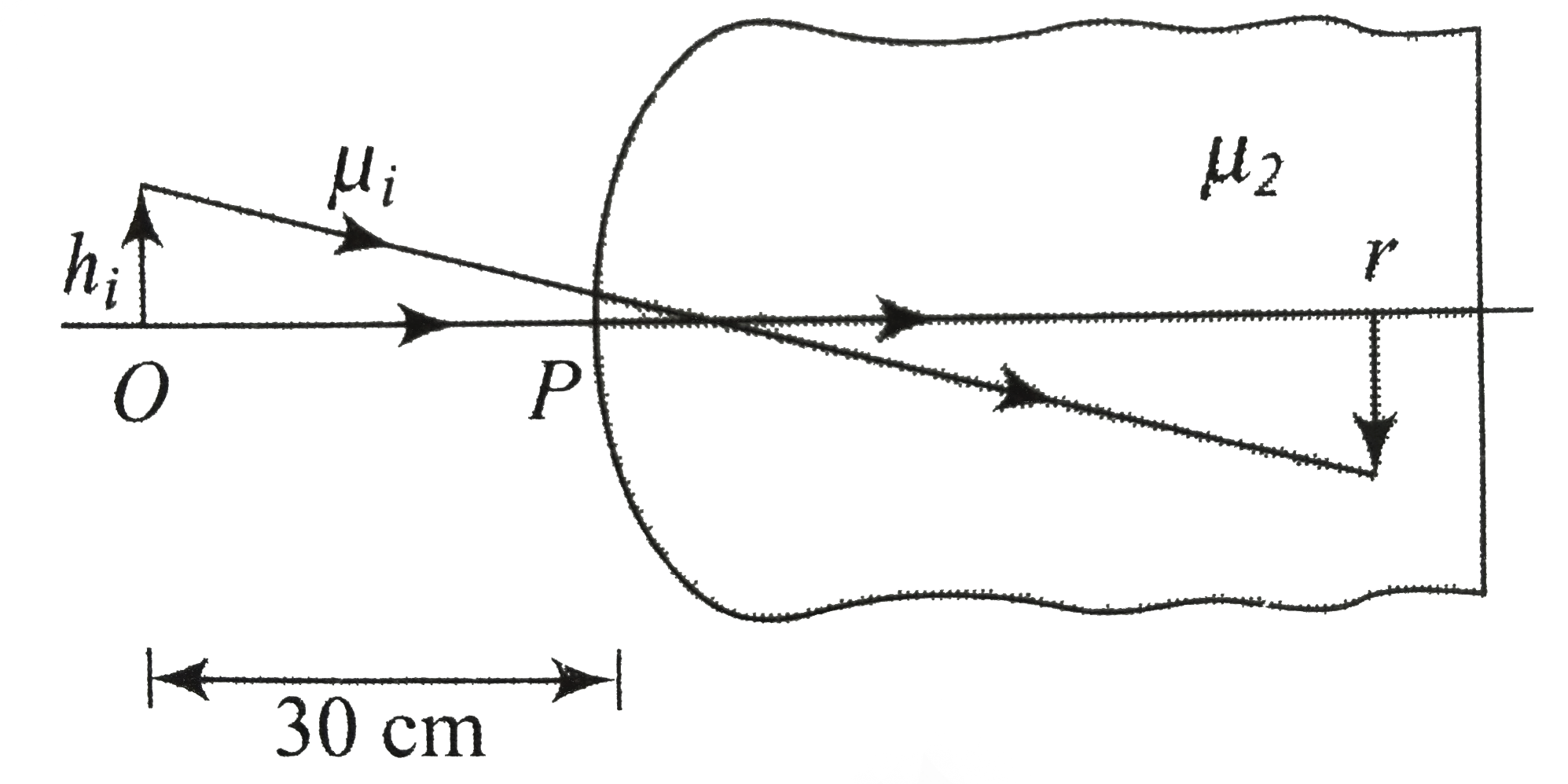An object is placed in front of convex surface of a glass plano-convex lens of thickness d=9.0cm. The image of that object is formed on the plane surface of the lens serving as a screen. Find:
(a) the transverse magnification if the curvature radius of the lens's convex surface is R=2.5cm,
(b) the image illuminance if the luminance of the object i sL=7700cd/m2 and the entrance apertune diameter of the lens is D=5.0mm, losses of light are negligible.
The formation of the image of a source S, placed at a distance u from the pole of the convex surface of plano-convex lens of thickness d is shown in the figure.
On applying the formula fro refraction through spherical surface, we get
ns'−1s=(n−1)/R, (here n2=n and n1=1)
or, nd−1s=(n−1)/R or, 1s=nd−(n−1)R
or, s's=s'{nd−(n−1)R}
But in this case optical path of the light, corresponding to the distance v in the medium is v/n, so the magnification produced will be,
β=s'ns=s'n{nd−(n−1)R}=dn{nd−(n−1)R}=1−d(n−1)nR
Subsituting the values, we get magnification β=−0.20.
(b) If the transverse area of the object is A (assumed small), the area o fthe image is β2A. we shell assume that πD24>A. Then light falling on the lens is : LAπD2/4s2
from the definition of luminance (See Eqn. of the book , here cosθ≈1 if D2<<s2 and dΩ=πD2/4s2). Then the illuminance of the image is
LAπD2/4s2/β2A=Ln2πD2/4d2
Substitution gives 421x.

Topper's Solved these Questions
- BOOK - IE IRODOV, LA SENA & SS KROTOVCHAPTER - OPTICSEXERCISE - Interference Of Light33videos
OPTICS
- BOOK - IE IRODOV, LA SENA & SS KROTOVCHAPTER - OPTICSEXERCISE - Diffraction Of Light60videos
OPTICS
- BOOK - IE IRODOV, LA SENA & SS KROTOVCHAPTER - MECHANICSEXERCISE - Mechanics Problems92videos
MECHANICS
- BOOK - IE IRODOV, LA SENA & SS KROTOVCHAPTER - OSCILLATIONS AND WAVESEXERCISE - Electromagnetic Waves, Radiation36videos
OSCILLATIONS AND WAVES
Similar Questions
An object is placed 60 cm from a screen .Where should you place a convex lens of focal length 15 cm to get the image of the object on the screen ?
View SolutionA small object of height 0.5 cm is placed in front of a convex surface of glass (μ−1.5) of radius of curvature 10cm. Find the height of the image formed in glass.
 View Solution
View Solution
Knowledge Check
- Question 1 - Select One
An object is placed before a convex lens. The image formed
Ais always erectBmay be erect or invertedCis always invertedDis always real - Question 2 - Select One
An object is placed before a convex lens. The image formed
Ais always realBmay be real or virtualCis always virtualDis always erect - Question 3 - Select One
An object is placed 1m in front of the curved surface of a plano-convex lens whose plane surface is silvered. A real image is formed in front of the lens at a distance of 120cm. Then, the focal length of the lens is
A100cmB120cmC109.1cmD110.0cm
The convex surface of a plano-convex lens is silvered and the radius of curvature of this surface is R. Find the focal length of the system:
View SolutionAn object 2.5 cm high is placed in front of a convex lens of focal length 30 cm. If the height of image formed is 5 cm, find the distance between the object and the image?
View SolutionA point object is placed 60cm in front of a convex lens of focal length 15cm. A plane mirror is placed 10cm behind the convex lens. Where is the image formed by the system ?
View SolutionThe radius of curvature of the curved surface of a plano-convex lens is 20cm. If the refractive index of the material of the lens be 1.5, it will
View SolutionThe focal length of plano-convex lens, the convex surface of which is silvered is 0.3m, if μ of the lens is 7/4, the radius of curvature of the convex surface is
View Solution

